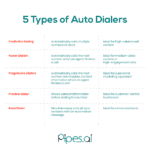
The inbound lead process consists of locating prospects for a company’s goods and services by conducting research. However, the outbound call center is used by salespeople to close deals. Prospects can call to inquire about new products and services, or to share their opinions about the current offerings. Customers already in the market can call to voice complaints or feedback regarding their experience with the product or service. Outbound calls are used to gather information for market research and satisfaction of customers. These are usually used to launch new products or add features to existing products.
Inbound call center
A call center with inbound capabilities can be an excellent resource for companies looking to increase sales. 66% of customers call the number to seek assistance. A high-quality call center can answer inbound calls around all hours of the day. A short wait time is an essential factor for customer satisfaction, and high-end technology for call centers will help to keep the calls going. Here are some guidelines for hiring an inbound calling center. Listed below are some tips that will help you select the right one for your business.
Automated call distributors (ACDs) can simplify the task of agents at call centers inbound. They employ intelligent routing algorithms that include the levels of proficiency and expertise to ensure that agents receive calls they are qualified to handle. Customer relationship management (CRM) applications can be integrated with phone systems to give agents access to crucial information about customers and their history. When an agent responds to the phone CRM screens can be displayed automatically. Agent dashboards allow agents to examine and manage their performance data.
An inbound call center is a crucial element of any business. It is vital to provide exceptional customer service across all channels. A negative customer experience could cost your business loyal customers. Inbound call centers will provide a pleasant customer experience. They’ll be waiting for customers to reach them, and will provide assistance and advice. In addition, inbound call centers can take calls from social media and live chats, which makes them an excellent resource for any business looking to improve customer service.
Inbound call centers are internal departments that receive calls from customers. These centers usually focus on sales, and utilize CRM systems to monitor interactions with customers. Agents are also able to offer proactive customer support, market research, or even collect debts. In addition to responding to inbound inquiries, inbound call centers also have the capability of responding to general inquiries or complaints. They work with customer lists, often using customer data stored in CRM software.
Call center inbound vs outbound
Outbound and inbound call centers provide different kinds of customer support. Inbound call centers provide customers with assistance, including account updates or technical support. Outbound call centers gather data to conduct market research and customer research. This is typically used to launch new products or to update features. Both have their strengths and weaknesses. You can determine which call center is the best for you by reviewing the calls you receive every day.
Inbound call centers are more oriented towards customers and have customers in control. This type of call center requires that the agents be polite and have superior listening and problem-solving skills. In a call center that is outbound agents must be more assertive and better be able to recognize the emotions of customers. There are four main categories for both outbound and inbound call centers:
The difference between call centers is subtle, but vital. Inbound call centres are focused on listening to customers while outbound call centers are focused on contacting them. Outbound call center agents make calls instead of awaiting a customer’s inquiry. They might have other goals for example, like selling a product or service. They are not devoted to customer service, either.
While both types of call centers provide customer service, outbound call centers focus on sales. They employ outbound methods to contact customers and to make sales. These sales calls can be used for follow-up on leads , or for product information. Outbound call centers are an ideal choice for businesses with an abundance of customers. They can handle more calls, and not require the hiring of as many people. It is important to understand the distinction between outbound and inbound call centers in today’s business world.
Inbound call centers can provide excellent customer service and increase sales. They can also assist with the creation and updating of data. This is a vital service in the call center since it helps maintain relationships with customers. Companies should consider the cost of outsourcing to reap the maximum benefits of both the inbound and outside call centers. It is important to keep in mind that although inbound call centers are superior for customer service while outbound call centers tend to be better for sales and marketing.
Cost of outbound call centers
It isn’t easy to estimate the cost of an outbound customer support team if you are looking to hire one. Call centers in the US average $22 an hour, whereas Western European and Australian call centers cost between $40 and $55 per hour. Eastern European, African, and Middle Eastern call centers are much cheaper, with rates between $8 and $18 an hour. Asia call centers usually cost around $5 to $10 an hour.
Outbound contact centers are generally involved in lead generation and selling however this may also be used to set appointments. However, these kinds of outbound calls may not result in customer acquisition, so some organisations split their expenses by the number of leads or sales that are generated. Depending on the business, this cost per call can make up approximately half of the cost of fulfilling an order. The exact amount is contingent upon the size of the business, the expertise of the outsourcing firm, and the amount of interactions per agent.
The most important factor to consider when calculating the cost of outsourcing a call center is the kind of service the business is seeking. Some call centers are open 24 hours a days and some are governed according to a schedule and are paid per hour. It is essential to select the best provider for your business in both instances. There are risks that come with outsourcing.
Outsourced call centers use various software programs to aid agents as well as business development professionals. This price includes the multiple licenses that these software need to function. This price also includes any software updates or IT support required by these hardware and software. Outbound call centers can be more expensive than hiring outsourcers to handle the work. In the end, you’ll receive an excellent service that will satisfy your customers very well.
VoIP-based systems offer the best cost-effective option for call center personnel. Outbound calling rates are typically lower than regular business telephone rates. Self-managed VoIP systems allow you to select your provider for outbound calls, while hosted VoIP systems charge a per-minute and per-30-second fee. If you make many calls, you can avail discounts.
Training for outbound call center agents
The most important aspect of effective training for outbound call center agents is to identify areas in which improvement is required. Many call center agents don’t recognize the importance of keeping to deadlines and schedules. This can lead to high turnover rates. Additionally, new agents often struggle to navigate the busy call centers. Agents need to be given numerous training opportunities and regularly coached. These practices help to boost agent engagement and enhance overall performance.
Two types of training options are available for call centre agents who are outbound. One type of training includes regular refresher sessions , as well as gamification, which involve playing competitive games to increase agent performance. Agents can also be able to receive real-time calls to understand how to handle these calls. Before agents can be given real-time calls they must first be educated. If the training is not effective agents may not be able to perform the new duties.
Effective outbound calls also require the recruitment of qualified agents. This requires significant investment in the training of agents to work at the front of the line. It is also important to choose the right people since high turnover could negatively impact the provider’s profit margin. Online recruitment websites are a great way for companies to identify the best candidates. Then, they can invest in marketing and recruitment campaigns to help them achieve their goals. Training outbound call center representatives must be focused on customer satisfaction and providing quality customer service.
Training should be given to new employees to develop their soft skills. The manager of the call center should spend time discussing customer expectations regarding service and setting standards. Key performance indicators should be addressed in training sessions, such as the first call resolution time and call accuracy. They also need to discuss customer satisfaction as well as productivity, attendance, productivity, and attendance. These metrics are important but agents shouldn’t be too focused on them. Agents should be allowed to to study the basics. A great example is the best way to educate someone.
Managers of call centers must explain their expectations to new employees prior to when they allow them to be onboarded. Although it can be a stressful work environment it can also be beneficial to provide employees with the tools they require to decrease turnover. Call center agents should receive constructive feedback on their performance through monitoring the calls as well as analysis of recordings of calls. Some managers even make Q&A scorecards to assist agents to improve their skills. They should be aware that it isn’t a sure thing for success.



